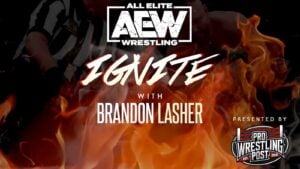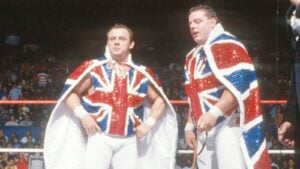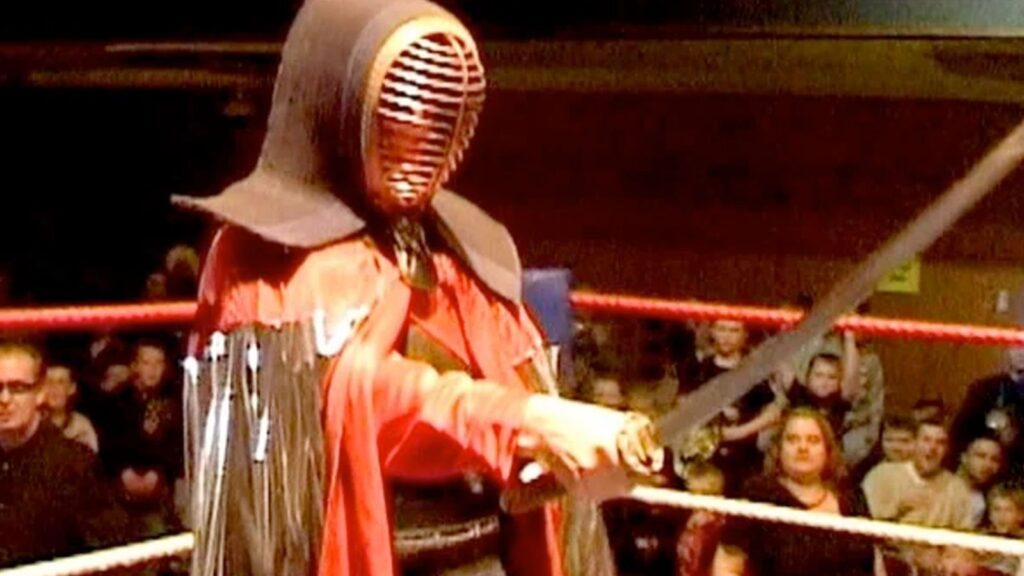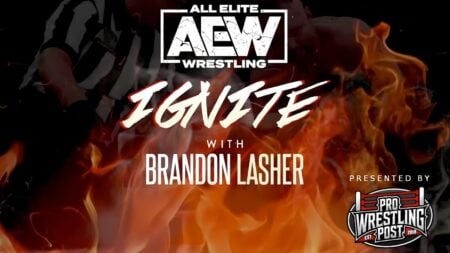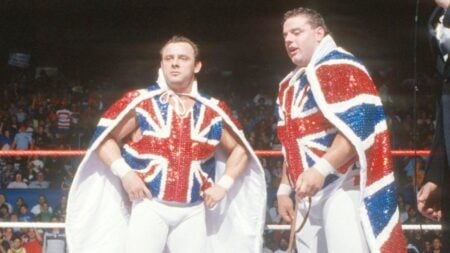When professional wrestling fans think of men in masks walking through the ropes, they will usually think of the luchadores of Mexico who have made the art of performing under a mask a part of Mexican culture.
Yet, there was a time when everyone in Britain thought of someone else whose name has since become a pivotal part of British professional wrestling history. That name was Kendo Nagasaki.
Not a typical British name by any means but nevertheless it was one that fans piled into arenas across the isles to see whenever they could.
Kendo Nagasaki’s mystique and mastery of the crowd made him one of the pillars of British professional wrestling’s golden age who left living rooms and civic halls alike playing one of the biggest guessing games of the 20th century – just who was Kendo Nagasaki?
Kendo Nagasaki – Three Thousand To One
Kendo Nagasaki first came into the ring in 1964 where he wrestled for Bill Best Promotions and Wryton before slowly making his way around the Joint Promotions, which were essentially the British version of the National Wrestling Alliance in the United States.
These promotions worked together to dominate British professional wrestling, benefiting every promotion in the outfit and providing talent with opportunities to wrestle up and down the country.
Nagasaki’s hooped mask and silent, samurai-like get up set him apart from the rest of the wrestlers that the Joint Promotions had to offer and this naturally led to him playing the role of a villain.
Although their was one other man who wore a mask on the scene and that was Count Bartelli, the trainer of Kendo Nagasaki.
Bartelli had been undefeated for over twenty years by the time that Nagasaki came about and unlike other rookies, Nagasaki was a difficult man to defeat just like Bartelli had been.
This set up the pair to have one of the most hotly anticipated matches that British professional wrestling had ever seen on March 5th 1966 at the Victoria Hall in Hanley.
Two masked men would enter the ring, but only one could leave with their mask still covering their face.
Bartelli was left bloodied behind his mask and he was flung from the ring to the floor outside where he remained for the referee’s ten count.
As the night came to an end, the rookie Kendo Nagasaki had defeated Count Bartelli, a man with over three thousand career victories and zero losses, who was now just a man.
Nagasaki International
With the endorsement of his trainer Count Bartelli, Nagasaki’s name went up in value and he soon found himself working overseas in Japan for Isao Yoshiwara’s International Wrestling Enterprise (IWE) at their Dynamite Series in 1968.
There, he worked in his signature mask as Mr. Guillotine, picking up a few losses but not ones that the fans back home would hear about. If anything, the word of him wrestling in Japan only added to the fans’ theory that he was, in fact, a Japanese wrestler.
Upon his return to Britain, he continued his impressive run of victories wherever he went and, for the very first time, Kendo Nagasaki made his television debut in 1971 against Wayne Bridges.
World of Sport was the only place to watch professional wrestling on British television, and getting a spotlight at prime time was no easy task, even for an alluring character like Nagasaki.
Originally, television bosses were hesitant to show too much of Nagasaki due to how eerie his gimmick came across, not to mention the fact that he walked to the ring with a samurai sword (which was cut from his first appearance when the match was aired).
Regardless of the television bosses opinions, the opinions of the fans were what mattered and they made it clear that they wanted to see more of Nagasaki as they were desperate to understand more about the man.
The duo were polar opposites and that’s what made them work; the extravagant speeches and antagonising that would be out of character for Nagasaki was right up Gillette’s street while Nagasaki himself took charge of the in-ring business.
Gillette would even reluctantly find himself in the ring from time to time, though usually scurried back to the ring apron where Nagasaki was waiting to be tagged in before he could get his comeuppance.
This set the two up for a 1972 tour of Canada with Stu Hart’s Stampede Wrestling, where Nagasaki won their North American Heavyweight Championship from George Portz and defended it four times before dropping it back to Portz ahead of his departure.
During this time, Nagasaki developed his most famed move, the ‘Kamikaze Roll,’ which involved lifting his opponent onto his shoulders in a fireman’s carry and rolling forwards.
He also started to sport a ponytail that poked out of the back of his mask, making him eligible for a tag team hair vs. hair mask for his final stampede appearance.
He and Lord Sloane were successful in the match over Bruce Hart and Dan Kroffat having previously fought in a no contest. Don Owen’s Pacific Northwest Wrestling in Portland, Oregon also saw an appearance from Nagasaki before his return home.
Kendo Nagasaki vs. Daddymania
Naturally, when the next big star is everywhere to be seen, fans will want to see that star take on other stars of the era.
The two biggest stars that Britain had to offer, both in name and sheer size, were Giant Haystacks and ‘Big Daddy’ Shirley Crabtree, both of whom encountered Nagasaki on a number of occasions.
Big Daddy would turn into one of Nagasaki’s most famous rivals in a long-running feud that helped to elevate the pair to icon status in Britain where everyone with tickets or a television set hoped to see them across the ring from each other.
It was an early match between Kendo Nagasaki and Big Daddy, who at the time went by ‘The Battling Guardsman,’ that started off the feud and earned Nagasaki the respect of the fans.
For the best part of his career, Crabtree weighed around 170 kg, making him difficult to move around the ring.
Despite his obvious low centre of gravity, Nagasaki was able to lift Crabtree into place for his Kamikaze Roll and deliver it to the big man who was unable to stand afterwards.
While Big Daddy had a reputation for being hard to maneuver, he also had a reputation for using his weight to charge his opponents and knock them out of the ring.
This allowed the likes of Nagasaki to lose to Big Daddy via countout instead of being pinned or submitted, which the crowd still loved, seeing it as a humiliating way to lose.
Nagasaki and Big Daddy went back and forth in tag matches and the occasional special singles match for years, with Big Daddy even snatching Nagasaki’s mask during a match in 1975 to give the fans a brief glimpse of the man beneath.
Yet it was not enough, the fans wanted a good look at him and Nagasaki was more than happy to oblige.
The Unmasking of Kendo Nagasaki
Usually, when a professional wrestler is set to lose their mask, they’re paid a substantial sum to let go of a huge part of their identity in a grand spectacle that pits them against a bitter rival who also puts something of equal value on the line.
That being said, Kendo Nagasaki was not your usual masked man and a man built around such a mystery was never going to unmask in a traditional way.
Nagasaki was intent on unmasking in his own, unique, way; so he approached promoter Max Crabtree, brother of ‘Big Daddy’ Shirely Crabtree, about his intention to unmask.
Max Crabtree later said that;
“he (Nagasaki) didn’t have a very unusual face. He was just a nice-looking sort of guy, but nothing significant.
But he was so determined to unmask that we decided to do it properly, at the Wolverhampton Civic Hall where he was hottest.”
December 20th, 1977, at the Wolverhampton Civic Hall. That would be where the world would truly know who was under the famous mask.
Tickets for the event sold quicker than they do for Wrestlemania despite the fact that there was no professional wrestling of any kind taking place. Instead, a ceremony was held to reveal the true identity of Kendo Nagasaki.
He entered the ring alongside his robed manager, Gorgeous George Gillette, and two hooded figures that resembled druids.
Nagasaki and the druids stayed silent as Nagasaki knelt, his sword stabbed into the canvas in the centre of the ring with the druids either side of him.
Then Gillette would speak on Nagasaki’s behalf as he always had:
“Kendo has been in a secret retreat where he has been learning to build up his powers – his powers not only in wrestling, but his powers to help heal other people and to do many other things.
Tonight is the ultimate fulfilment of all those dreams, the unveiling and unmasking of Kendo Nagasaki.”
The druids then lay either side of Nagasaki, and Gillette removed Nagasaki’s black mask prior to setting it alight in a bowl at his side. As the mask burned, the face that had been beneath it for thirteen years was revealed.
Nagasaki’s face was that of a white man who looked as though he was staring blankly into a void, a man who did not care for what the vocal fans thought of him.
The fans watching would’ve been forgiven for not focusing on his expression as they were likely drawn to his absurd hairstyle that consisted of a shaved head, a full-length ponytail at the crown, and, most notably, a tattoo of a star with an eye at the center atop his head.
A year after he was unmasked, Nagasaki retired from in-ring competition after being advised to do so by his doctor. He continued to make public appearances wearing his famous mask.
The Return of Kendo Nagasaki
Nagasaki was not an easy man to replace but many tried to do just that. In 1979, the Joint Promotions debuted ‘Kendo Nagasaki II’ while promotor Sandor Kovacs debuted another Kendo Nagasaki who was actually Bill Clarke.
This decision was subject to legal action from the original Kendo Nagasaki, which caused the version portrayed by Clarke to be renamed to ‘King Kendo.’
1986 saw Kendo Nagasaki climb back into the ring on ITV, notably in his mask that he had decided to once again don so that he could be fully immersed in the character.
Nagasaki then became a main feature of All Star Wrestling (formerly Wrestling Enterprises of Birkenhead), a promotion that had become the largest in Britain since Nagasaki’s retirement.
A feud between Kendo Nagasaki and King Kendo seemed an obvious choice for Nagasaki’s second run in the business and the two competed in a series of mask vs. mask matches which ultimately saw Bill Clarke’s King Kendo being forced to unmask.
The character of King Kendo didn’t die with Clarke and it was passed onto Dale Preston who continued to play the character into the 21st century.
Nagasaki would also feud with Robbie Brookside. The feud was far from normal as Nagasaki would ‘hypnotise; Brookside into attacking his tag team partners so that Nagasaki could score easy victories.
Kendo Nagasaki continued to wrestle up until 2001 where he retired for a second time in All Star Wrestling after defeating Dean 2 Extreme, Doug Williams and James Mason in a four way match.
He then came out of retirement a fourth time for a string of matches in 2008 at Sanjay Bagga’s LDN Wrestling which he has made repeated appearances for in the years since his last match with them.
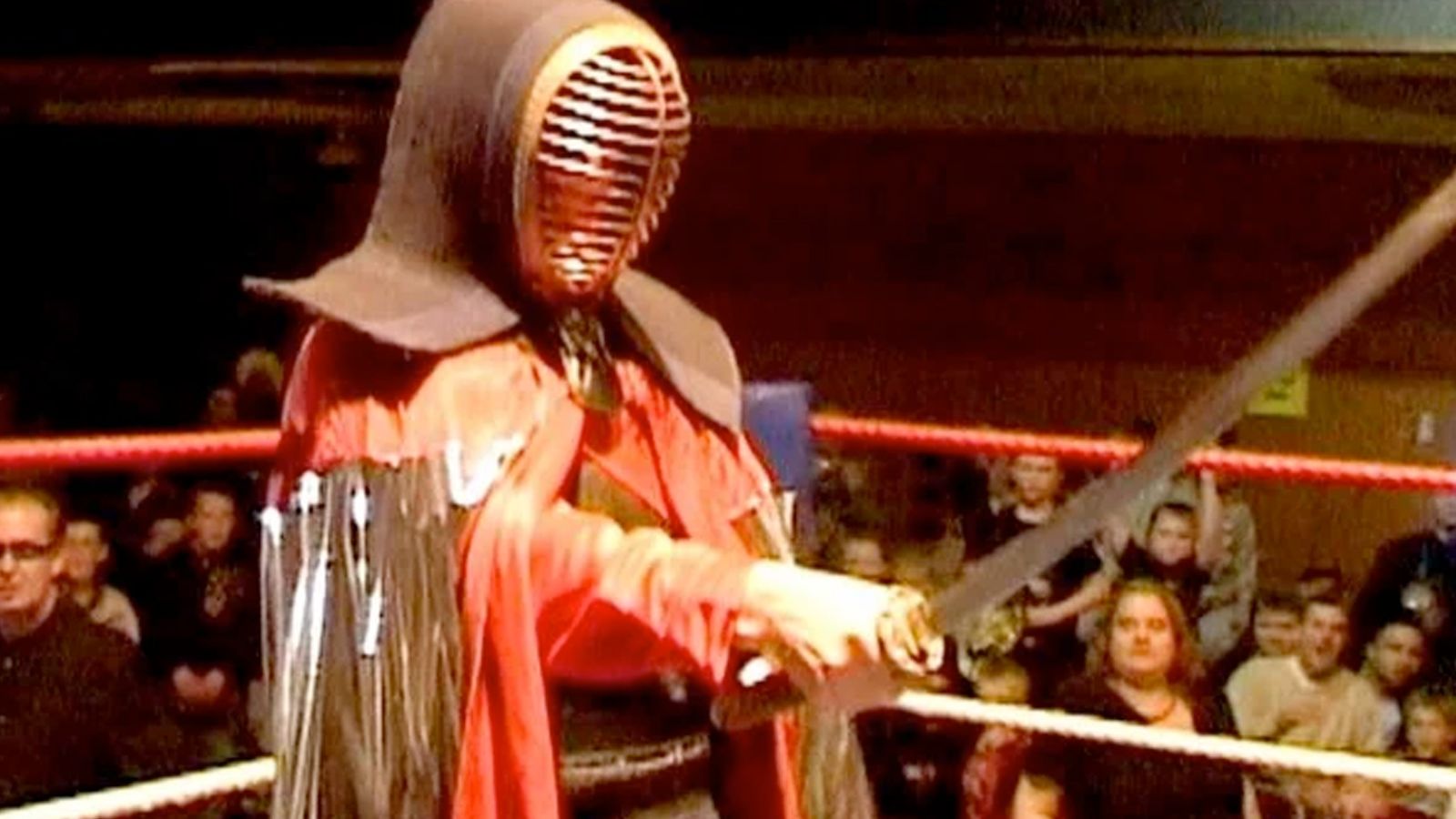
Beyond The Ring
As it happens, Kendo Nagasaki is just as interesting outside of the ring as he was in it. His real name, Peter Thornley, was revealed after a court case over a land dispute in 2002.
Incidentally, it then became evident that he was the manager for rock singer Laura Pallas and the new wave band Cuddly Toys.
Born near Telford in Shropshire, he prefers that he be referred to as “Yogensha” (Japanese for seer) when he is not playing Kendo Nagasaki and also states that his character is a spirit guide and teacher that is being channelled through an otherwise ordinary individual.
Nagasaki came to this conclusion while meditating, as he is a practicing Zen Buddhist. While in meditation, the spirit of a 300-year-old samurai came to him; this spirit was Kendo, who lived in the place now known as Nagasaki.
This has led Nagasaki to set up the Kendo Nagasaki Foundation. The aim of the Kendo Nagasaki Foundation is to “promote Zen Buddhism and its teachings and practises and introduce people to its immense scope and great power, to explain what it is, and how it can positively revolutionise every aspect of their lives.”
It was in his biography which he released for charity in 2018 where he revealed that he has secretly been living as a bisexual man for fifty years.
Nagasaki said that;
“I knew about my sexuality as early as 17, but it wasn’t until I was 26 that I started to be really me.
By the time I became a TV star back in 1972 I’d had a flings with other men but there was no way Kendo Nagasaki, the macho bad boy of wrestling could tell his story back then.
People would never have accepted it, but thank goodness we live in different times, and I just hope my story helps others be the best they can be – like I have always tried to be – and that my fans understand and stick by me because they mean the world to me.”
Nagasaki even owns the Kaos gay bar in Blackpool, one of a number of properties that have helped to contribute to his wealth.
This wealth has allowed him to live in a fifty room mansion that overlooks the Staffordshire Moorlands that features a museum dedicated to his history as a professional wrestler.
The land also features a retreat for families of bereaved soldiers, set up by Nagasaki and the mother of Drummer Lee Rigby, who was murdered in 2013.
Nagasaki’s manager, Gorgeous George Gillette, was a homosexual man who unfortunately died in 1989 after suffering from AIDS.
Kendo said that his life was changed when he met Gillette by chance in 1967 and owes much of his career to the man. Their first meeting came at Wimpy Bar in Earl’s Court, London when Nagasaki had stopped off to grab a burger after one of his matches.
Nagasaki said;
“Unknown to me it was a notorious gay hang out and George came over for a chat. It was a watershed moment. Being brought up in Crewe I had never met anyone like him before.
He was outrageously camp. We never slept together but I know he fancied me. He introduced me to a whole new world and became my manager and rabble rouser in chief at all my shows.
George was an extraordinary character and became a lifelong friend. A true friend.”
A Stark Contrast
As one of the most iconic figures from World of Sport, Kendo Nagasaki’s true nature contrasted sharply with his ring persona.
Despite his fearsome name and appearance, as a professional wrestler, where he embodied the villainous samurai, a silent tormentor who delighted in making fan favourites suffer.
However, beyond the ring, Kendo Nagasaki is a compassionate individual dedicated to charitable causes and seeking peace after a tumultuous life and career.
Kendo Nagasaki was a household name in British professional wrestling who will be remembered as one of the greatest heels that Britain will ever see.
British Professional wrestlers of the present and the future will aspire to be the draw that Nagasaki was and hopefully they will aspire to be as good a human as he has been outside of the ring too.
References: Wrestling Heritage

